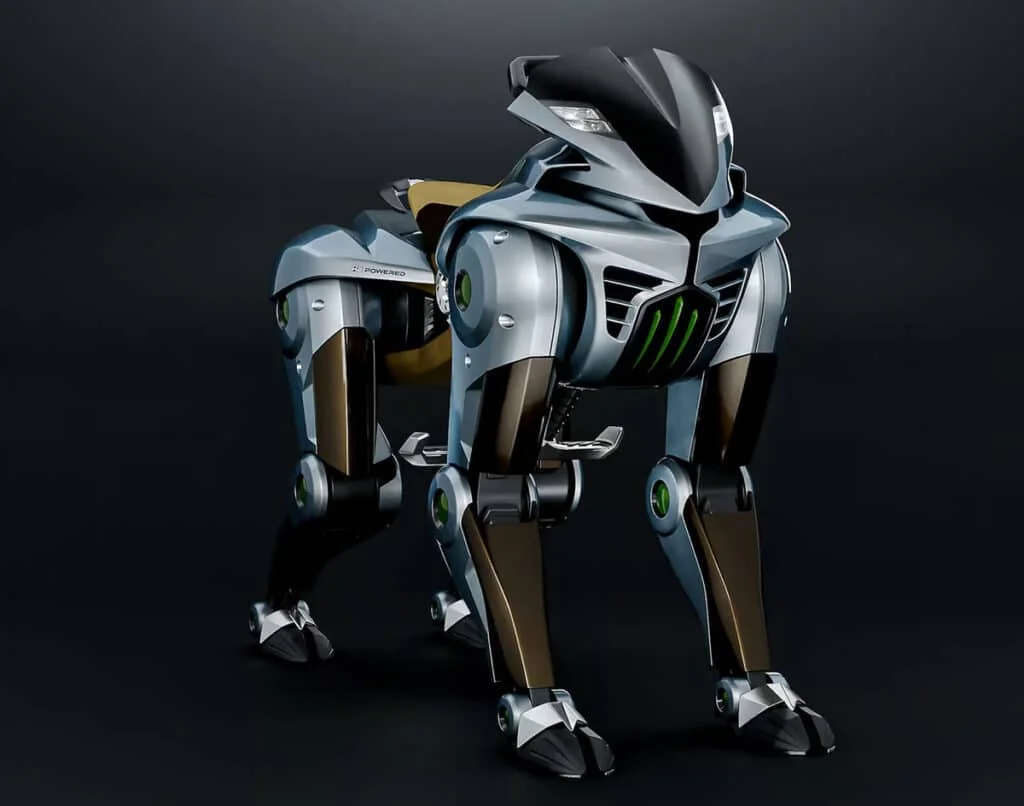
Kawasaki’s Corleo: Riding the Robotic Horse into the Future of Mobility
Kawasaki Heavy Industries has unveiled a groundbreaking concept that blurs the lines between science fiction and reality: the Corleo, a rideable, four-legged robot powered by hydrogen. This isn't just another futuristic concept; it's a bold step towards reimagining personal transportation, especially in challenging terrains. Is Corleo the future of personal mobility, or just a fascinating concept?

The Corleo, showcased at a preview for the upcoming Osaka-Kansai Expo 2025, is designed to traverse rough terrain where conventional vehicles struggle. Imagine a machine that combines the agility and grace of a wild animal with the cutting-edge technology of a modern robot. That's the vision Kawasaki is bringing to life.
According to Futura-Sciences, the Corleo “looks like a giant feline and behaves like a horse”, this two-seater quadruped robot responds to the rider through intuitive understanding of its surroundings. Its 150cc hydrogen engine-generator would make it a cool and also environmentally friendly ride.
The Corleo Experience: Intuitive and Stable
Kawasaki promises that even beginners will find the Corleo stable, responsive, and surprisingly intuitive. Riders mount the Corleo as they would a real horse, guiding it with subtle shifts in body weight. A heads-up display provides essential information, from hydrogen levels to balance cues, enhancing the rider's control and awareness.
However, according to an analysis, the design concept may be limited in “abduction and adduction” which is a limiting factor for balance. Locomotion will require reliable sensors that can work under various environmental conditions in order to traverse rocks and to detect slippery terrain. An issue which autonomous cars are already struggling with.
Hydrogen Power and Clean Mobility
This isn't Kawasaki's first foray into hydrogen-powered technology. The company previously unveiled its Ninja H2 HySE motorbike, demonstrating its commitment to carbon-neutral solutions. The Corleo, however, takes this commitment a step further by integrating clean energy with advanced robotics.
Beyond the Gimmick: Technological Implications
While the Corleo might seem like a futuristic fantasy, its development could have significant implications for other areas of technology. Advances in legged robotics could revolutionize everything from self-balancing exoskeletons to assistive devices for disabled users.
Challenges and Future Prospects
The article points out the challenges ahead for Kawasaki. For the Corleo to be successful, it needs the endurance to walk and run effectively in natural settings, robust locomotion algorithms, and safety standards comparable to those of traditional vehicles.
What do you think? Is Kawasaki's Corleo a glimpse into the future of personal transportation, or a technological pipe dream? Share your thoughts in the comments below!